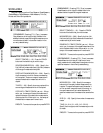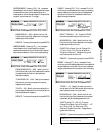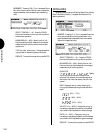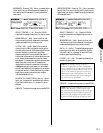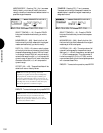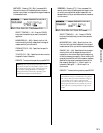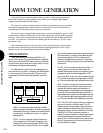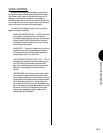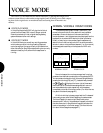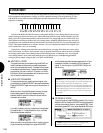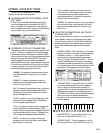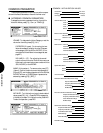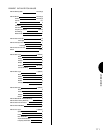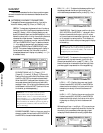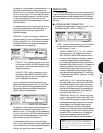
VOICE MODE
106
VOICE MODE
The W5/W7 s Voice Mode has two distinct functions: (1) playing back single voices
without system effects or other multi settings applied, and (2) editing voices while compar-
ing them to the original voice or initialized status and storing them in Internal voice
memory.
● VOICE PLAY MODE
In Voice Play Mode the W5/W7 will play the individual
voices (from the Preset, GM, Internal, Song or optional
External voice banks) in their original state, bypassing
system effects and other multi settings.
● VOICE EDIT MODE
In Voice Edit Mode you can edit any and all parameters
which make up a voice, including Insertion Effect and
controller settings. You can go directly to Edit Mode from
either Voice Play or Song Play and start editing the currently
selected voice at any time, even while the sequencer is
running.
NORMAL VOICES & DRUM VOICES
There are two basic types of voices in the W5/W7, the
normal voice and the drum voice, each with many editable
parameters. A normal voice is an instrument sound that
contains between 1 and 4 elements and can be played from the
keyboard (or an external MIDI device) in either a pitched or
fixed (i.e., every key or note number plays the same sound)
status. A drum voice is an entire drum kit or set of percussion
sounds. In a drum voice, a different element (i.e., drum sound)
can be assigned to each key on the keyboard or MIDI note
number.
STEREO VOICE
Voice Name
Volume Level
Insertion Effect Type/Parameter
Voice Edit
STEREO VOICE
Voice Name
Volume Level
Insertion Effect Type/Parameter
Pan
Volume
System Effect Send Levels
Key(Element) Edit
Voice Edit
NORMAL VOICE DRUM VOICE
Element
2
Element
1
Element
4
Element
3
Element Edit
Normal voices and drum voices are organized in various
preset and user-defined normal and drum
voice banks.
(NOTE:
You can access voice banks in both Voice and Song Modes, by
pressing function keys [F6] and [F7], located directly beneath
the display at the lower right of the screen).
Normal and drum voice banks are designated with a one- or
two-letter abbreviation code, respectively, which appears
immediately to the left of the voice number. (For more informa-
tion about voice banks, see page 25.)
˚
All of the individual voices are organized into 21 classes of
instrument groups, called Voice Categories, for easier access.
The Voice Category for each voice is identified by a two-
character prefix, which in Voice Mode will appear to the left of
the voice name, and in Song Mode will appear just below the
track volume section in the mixer screen. (For more informa-
tion about Voice Categories, see page 27.)



